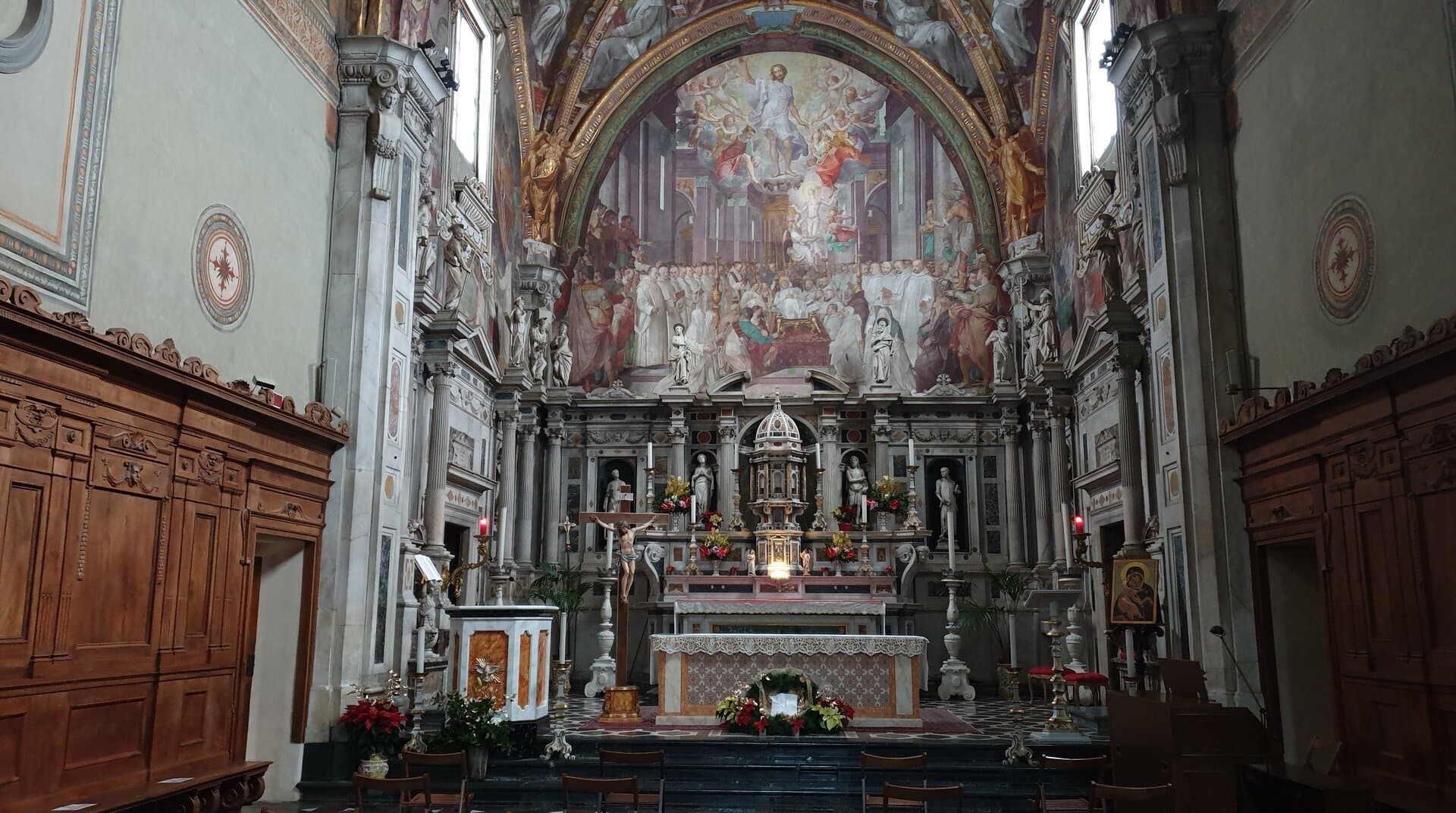
06 Feb La Certosa di Firenze: il monastero ignoto
Firenze è una città che pullula di splendide opere in ogni angolo. Molto spesso però tanti capolavori unici che meritano una visita vengono tralasciati e ignorati dagli itinerari turistici internazionali. Esempi (di cui ho parlato) sono il Museo Stibbert con la vasta collezione di armi e armature; il Tabernacolo delle Fonticine con la terracotta invetriata di Delle Robbia; la Chiesa dei Sette Santi Fondatori con le sue vetrate colorate. Altro esempio importante di cui ti parlerò oggi è la Certosa di Firenze. Situata tra le colline del Galluzzo questo edificio è luogo sicuro per trovare pace e una connessione totale con sé stessi. Cosa che ha voluto trovare sia il pittore Pontormo che il banchiere e politico Niccolò Acciaiuoli. E’ grazie proprio alle donazioni e alle sovvenzioni di quest’ultimo che possiamo ammirare questo meraviglioso complesso. Prima di parlare di alcune sale della Certosa di Firenze vediamo insieme le informazioni che potrebbero esserti utili per la visita e la sua storia.
PS: Se decidi di visitare la Certosa la sera allora ti consiglio vivamente di andare a mangiare al ristorante la Certosa di Firenze, adiacente al monastero. Oltre al meraviglioso ambiente i suoi piatti saranno una delizia per il tuo palato. Ti lascio QUI il link con il menù del ristorante.
NON HAI LETTO ANCORA L’ARTICOLO SU SANSEPOLCRO, LA CITTA’ RICCA DI TRADIZIONI ??
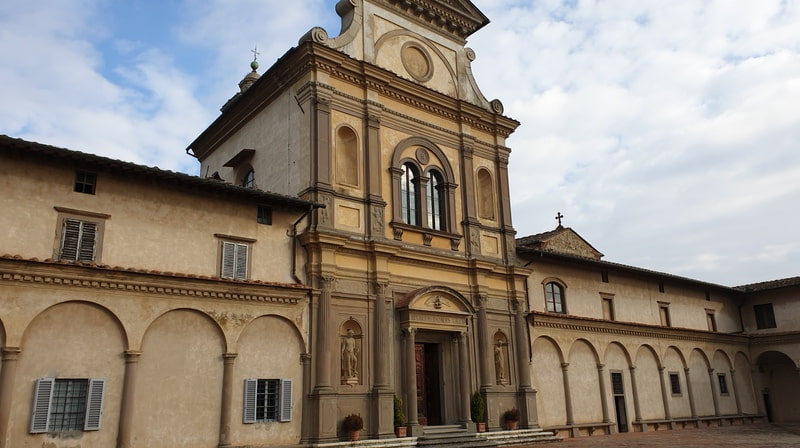
Informazioni utili sulla Certosa di Firenze
Come visitarla
L’interno della Certosa di Firenze è possibile visitarlo solo con accompagnatore. La visita guidata dura circa 1 ora ed è dal martedì al sabato alle ore 10:00, 11:00, 15:00, 16:00 (+17:00 dal 1 aprile al 31 ottobre); la domenica alle 15 ed alle 16:00 (+17:00 dal 1 aprile al 31 ottobre). Per singoli, coppie o piccoli nuclei famigliari non è necessaria la prenotazione ma basta presentarsi qualche minuto prima del turno di visita. Per gruppi di più di 6 persone devi prenotare; ti lascio comunque QUI il link del sito con i contatti. Qui dentro potrai anche comprare diversi prodotti come liquori, confetture e marmellate, sciroppi, cioccolato, olio ecc.. quasi tutti a km0. Gli acquisti (ti posso garantire di ottima qualità e naturali) aiuteranno a sostenere la Certosa. Se vuoi partecipare alla Santa Messa, questa viene celebrata la domenica e le solennità alle ore 11:00. Per altri eventi ti lascio QUI il link dei vari appuntamenti in aggiornamento.
Come arrivarci
La Certosa si trova a circa 1 km di distanza dall’uscita dell’Autostrada A1. Per arrivarci basta uscire al Casello Firenze Impruneta e seguire la via Cassia e successivamente la via Senese verso Firenze. Con i mezzi di trasporto pubblici invece devi scendere alla Stazione Firenze Santa Maria Novella e prendere l’autobus numero 37 in direzione Tavarnuzze. La fermata dove dovrai scendere è Senese Certosa a pochi passi dal complesso.
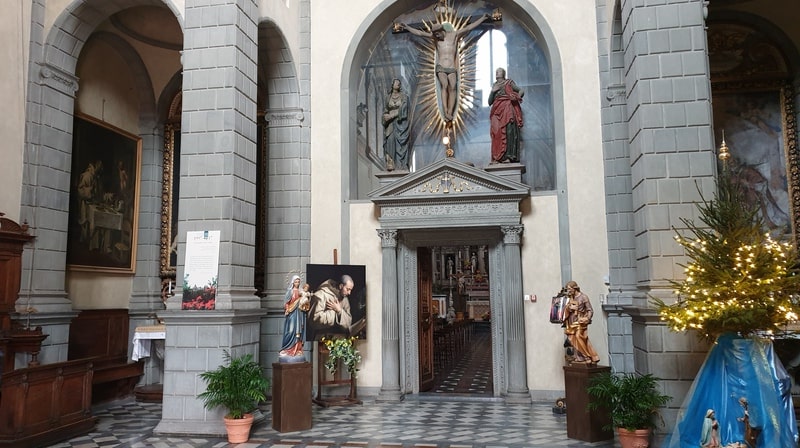
La storia della Certosa di Firenze
Il complesso monastico della Certosa di Firenze fu voluto da Niccolò Acciauoli, personaggio importante nel ‘300 e appartenente ad una ricca famiglia di banchieri fiorentini. Niccolò nel suo primo testamento voleva fondare una certosa nella sua città natale in quanto in Toscana ce n’era solo una vicino Siena. Oltre al motivo di “affetto” verso Firenze c’era anche quello politico perché edificare una certosa significava acquistare prestigio nella Corte Pontificia e nella Corte Angioina. Il luogo di costruzione fu scelto perché in posizione unica e perché la posizione elevata garantiva isolamento spirituale e difensivo. Gli assidui finanziamenti di Niccolò diedero ai monaci la possibilità di realizzare un progetto unitario e completo. La certosa fu completata e abbellita fino al XVIII secolo conferendo all’edificio una struttura rinascimentale di grande importanza. Verso la fine del 1950 subentrarono i Cistercensi al posto dei Certosini e resero il monastero accessibile anche alle visite esterne.
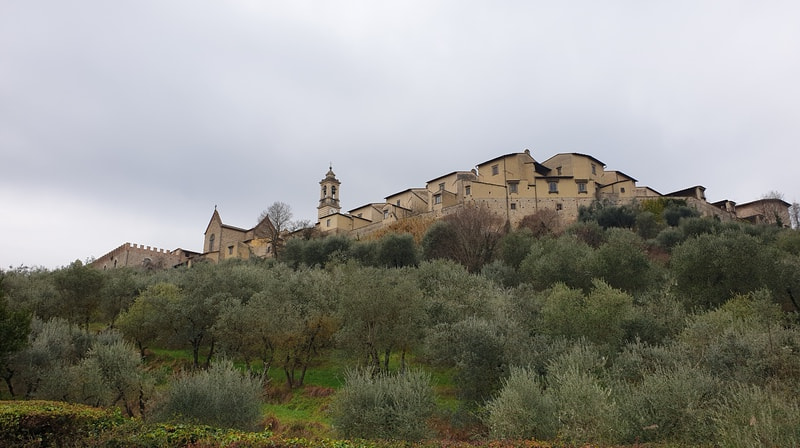
Le sale principali della Certosa di Firenze
Palazzo Acciaiuoli
E’ la prima struttura che si presenterà alla tua attenzione arrivando dalla strada. Conosciuto come “Palazzo degli studi”, fu costruito per volere di Niccolò Acciaiuoli per ritirarsi e trascorrere una tranquilla vecchiaia lontano dagli intrighi politici. Il palazzo è l’unica parte della certosa che ha mantenuto l’aspetto originale simile ad un fortilizio. E’ diviso in due piani con al pian terreno quattro saloni usati come sede espositiva mentre al piano superiore si trova la pinacoteca con il patrimonio artistico della certosa.
La pinacoteca
Vi si accede tramite la scala cinquecentesca esterna che conduce all’entrata del monastero ed è composto da due saloni. Nel primo dominano gli affreschi realizzati dal Pontormo che raccontano il ciclo della passione di Cristo più anche altre opere di maestri fiorentini e il grande crocifisso ligneo. La sala adiacente ospita dipinti del XVII secolo tra i quali spicca “la glorificazione di San Bruno” (fondatore dell’ordine certosino).
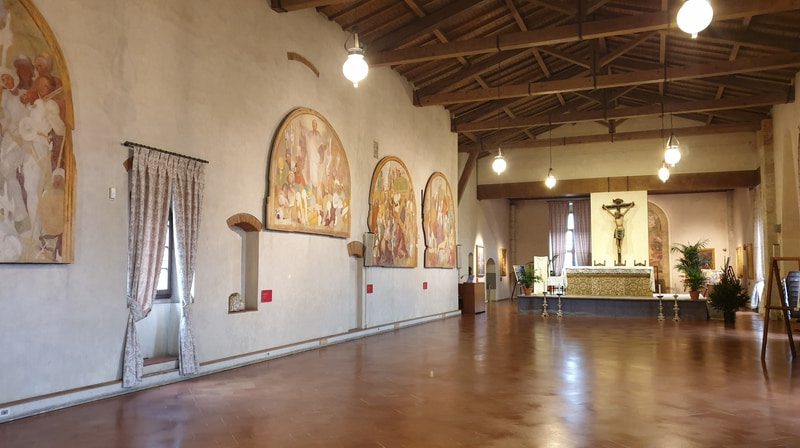
La chiesa monastica
La chiesa è divisa in due parti ben distinte, una destinata ai monaci di clausura (la parte più antica dell’edificio) e una destinata ai fratelli conversi che li assistevano. Quest’ultima parte presenta una pianta quadrata suddivisa da quattro pilastri che sorreggono al centro una cupola emisferica. In questa piccola zona c’è un bel coro ligneo di fine ‘500, due acquesantiere fiorentine e due tele.
Tramite un meraviglioso portale in pietra serena si accede alla zona più antica. Salta subito all’occhio lo straordinario altare marmoreo intarsiato con dentro le nicchie delle statue e circondato da colonne con sopra altre statue rappresentanti gli apostoli. Sullo sfondo un meraviglioso affresco di Poccetti rappresentante le esequie e ascensione al cielo di San Bruno e sulla volta a crociera altri affreschi rappresentanti Santi e membri illustri dell’ordine certosino. Dalla parte opposta un coro ligneo con intagli pregevoli decorativi.
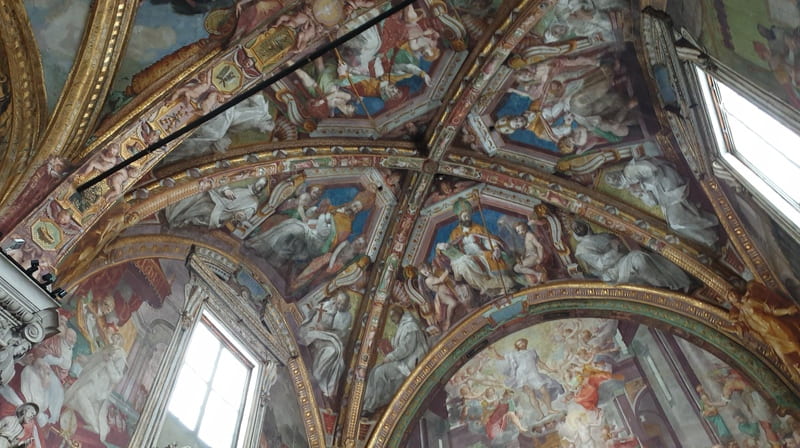
Il colloquio
Attraverso la porta del presbiterio della chiesa accederai ad un ambiente rettangolare detto Colloquio dei monaci. Qui infatti i certosini usavano radunarsi per brevi preghiere e per la ricreazione settimanale. Questo piccolo corridoio chiuso è decorato con una terracotta di Andrea Della Robbia raffigurante “Cristo che porta la croce” e da otto vetrate a grisaglia del XVI secolo.
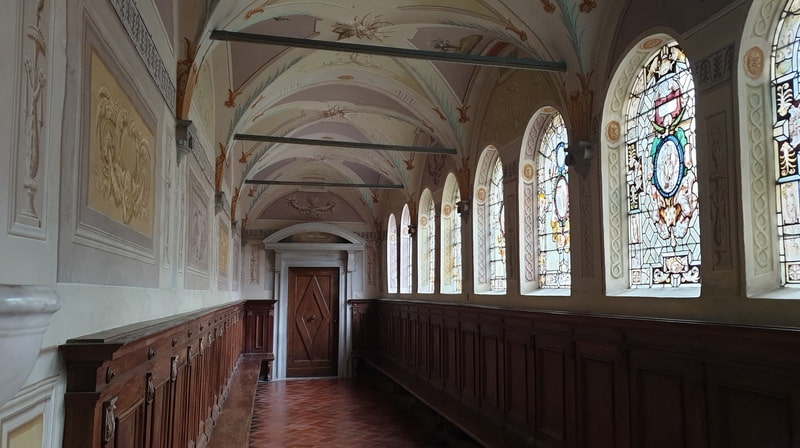
Il chiostro grande
Del chiostro trecentesco composto da dodici celle non è rimasta alcuna traccia. Quello visibile adesso è frutto dei lavori durati per più di vent’anni voluti da Don Leonardo Buonafè. La pianta del chiostro fu ingrandita: i lati settentrionale e meridionale furono spostati verso l’esterno in modo tale da realizzare un vasto chiostro quadrato. Su tre lati si trovano le 18 celle dei monaci mentre il quarto lato è occupato dalla parete di fondo della chiesa e dagli ambienti paralleli ad essa. I pennacchi degli archi del chiostro sono tutti decorati e tra di loro, sopra ogni colonna, sono collocati 66 busti in terracotta invetriata da Giovanni Della Robbia. I personaggi nel lato meridionale rappresentano figure dell’Antico Testamento; in quello occidentale Apostoli ed Evangelisti; in quello settentrionale Sante e Martiri; in quello orientale Santi e Dottori della chiesa. Al centro del chiostro si trova la cisterna o pozzo e due rettangoli adibiti a cimitero dei religiosi.

Le celle dei monaci
Sono concepite come piccole unità indipendenti dove il monaco trascorreva la sua intera cita uscendo solo per la refezione comune e per le celebrazioni liturgiche. I locali a loro disposizione nelle celle sono: al pian terreno il giardino con la cisterna, il laboratorio e la legnaia; al piano superiore tre stanze con sala da pranzo con camino, una stanza da letto con stanzino di servizio e un grande studio. L’arredamento interno era molto semplice ma allo stesso tempo funzionale per la vita del monaco. Accanto alla porta d’ingresso ogni cella ha uno sportello che serviva ad introdurre i cibi.
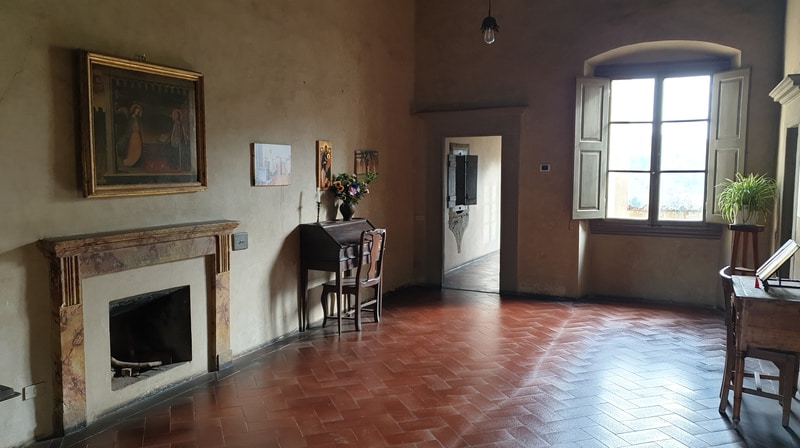
CONDIVIDI IL MIO ARTICOLO SU:
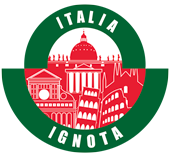
No Comments